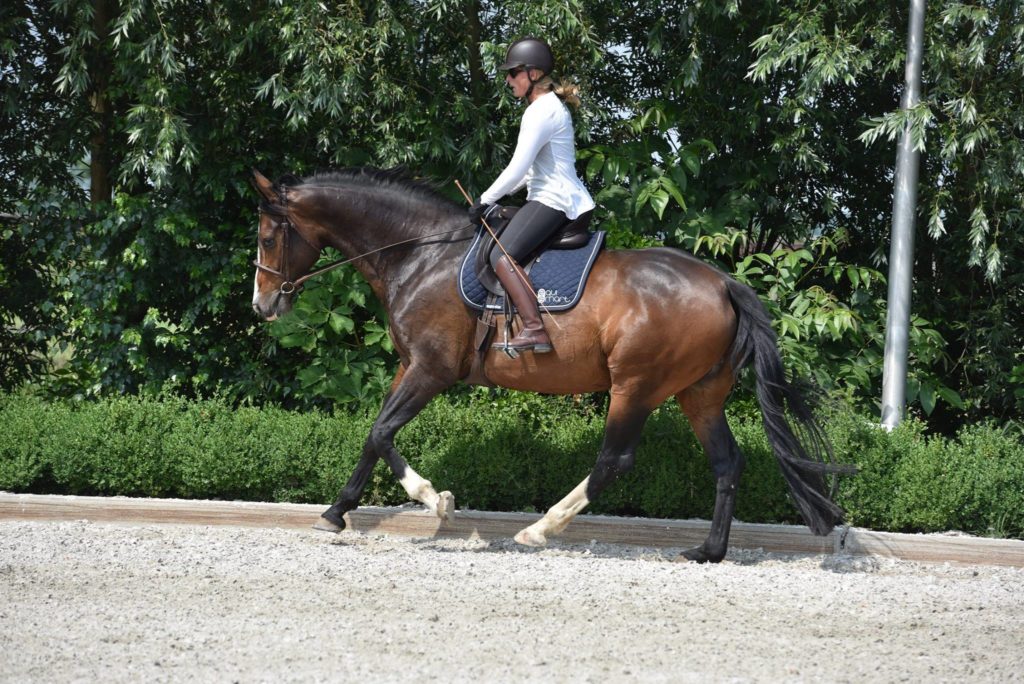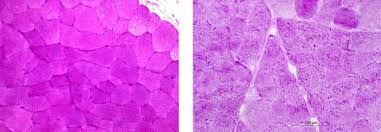CANTER WORK FOR HORSES WITH KISSING SPINES – YES OR NO? By DR KARIN LEIBBRANDT
As I have mentioned time and time again, kissing spines is not a stand-alone diagnosis – it is a combination of many problems. Kissing spines rarely occur on their own – they are most often accompanied by restrictions in the fascia, problems in the spine, skull, pelvis and the SI joints. For the sake of the thought experiment, let’s assume that the horse’s only issue is kissing spines.
WHY COULD THE CANTER BE GOOD?
In the canter, the horse has more flexion in his back compared to walk and trot. This rounding of the back causes the spinous processes to move further apart. Since the problem with kissing spines is that the processes are too close to one another or even touching, them moving further apart is a good thing. The canter also activates the muscles responsible for lifting the withers, the chest and the torso muscles. Strengthening these muscles in combination with working the horse with a rounded back, the back will eventually rise higher not only during canter, but during rest too. Because of this, there will be less pressure on the dorsal spinal processes even outside the training arena.
As we can see, canter is indeed beneficial for the horse with kissing spines. This of course only applies under the condition that the horse is sufficiently balanced. If he has the tendency to fall on the forehand during canter, he will overstretch his back and this will cause the opposite of what we want. His spinous processes will come closer to one another, making the problem worse. If the horse is not vertically balanced and his forehand and the hindquarters are not on the same line, this leads to an incorrect rotation in the spine. With the spine twisted, we cannot ask the horse to lift his withers properly. Therefore, there will be no correct rounding of the back, no strengthening of the correct musculature and no benefits from the canter.

You can easily spot the horses that canter out of balance by looking out for these telltale signs:
- The horse wants to go too fast.
- The canter feels irregular because the hindquarters canter next to the line of the forehand instead of on the same line. The rider is then literally tossed back and forth.
- The horse has difficulty executing turns.
- The horse picks up the wrong lead or crosses over.
- The horse feels heavy in the hand.
- The horse lands hard and does not want to return to trot.
If a horse is out of balance in the canter (and usually staying balanced in the canter is more difficult for the horse than staying balanced in the trot), he compensates by tightening his muscles and fascia. The ligament that connects all of the spinous processes (the supraspinous ligament) is in fact also fascia. On the x-rays we only see bones, but we don’t see this very important ligament. Horses with kissing spines often have abnormalities in this ligament that can be painful. If the fascia surrounding locomotive and postural muscles has to compensate for a lack of balance, this can have an immediate effect on the supraspinous ligament. For a good, healthy canter, balance is needed and the horse must be able to move in a healthy body posture. This means that first of all his body needs to be treated. The restriction in his fascia and blockages elsewhere in the body need to be resolved so the horse is able to move in canter in balance with a correct and healthy body posture. If a horse cannot do this, the canter work will be counterproductive. Whenever we are dealing with a kissing spines case it is important to first recognize the causes which lead to the development of this condition. We can then make an action plan of how to rehabilitate the horse and make him as comfortable as possible despite his issues. In order to do this, a combination of good bodywork and good training is absolutely necessary.
If you found this post interesting, you might also like the related content below:
Online Course of 37 video lessons on 4-D training – presented over 10 topics : Dr Karin Leibbrandt clearly explains the science behind proper training and guides you towards a regime that will give you the results you want. Compassionate Training for Today’s Sport Horse
Compassionate Training For Today’s Sport Horse Book written by Dr. Karin Leibbrandt DVM : Biomechanics in Four Dimensions The Key to improving Posture, Balance and Strength. More information here.
Equine Rehabilitation Video Series: Video series documenting rehab of a warm-blooded dutch mare who had a number of serious problems that we have been addressing over the past year. This series, along will all other member resources is available for Equitopia members. Find out more.
Blog post: Is there a cut off point, beyond which you shouldn’t rehabilitate a horse? Dr Karin Leibbrandt writes about making the most of your horse’s golden years! Available here.





